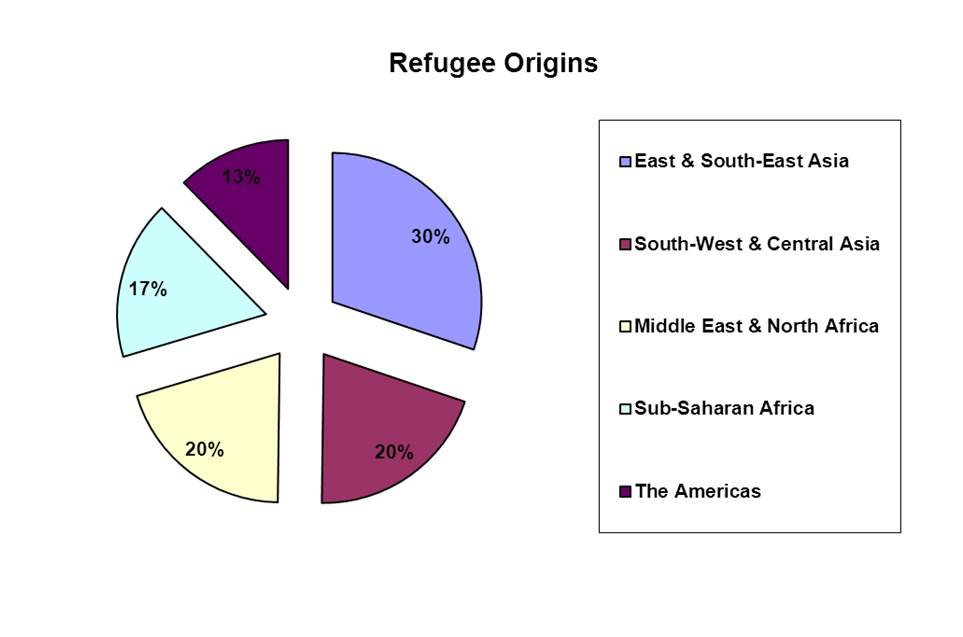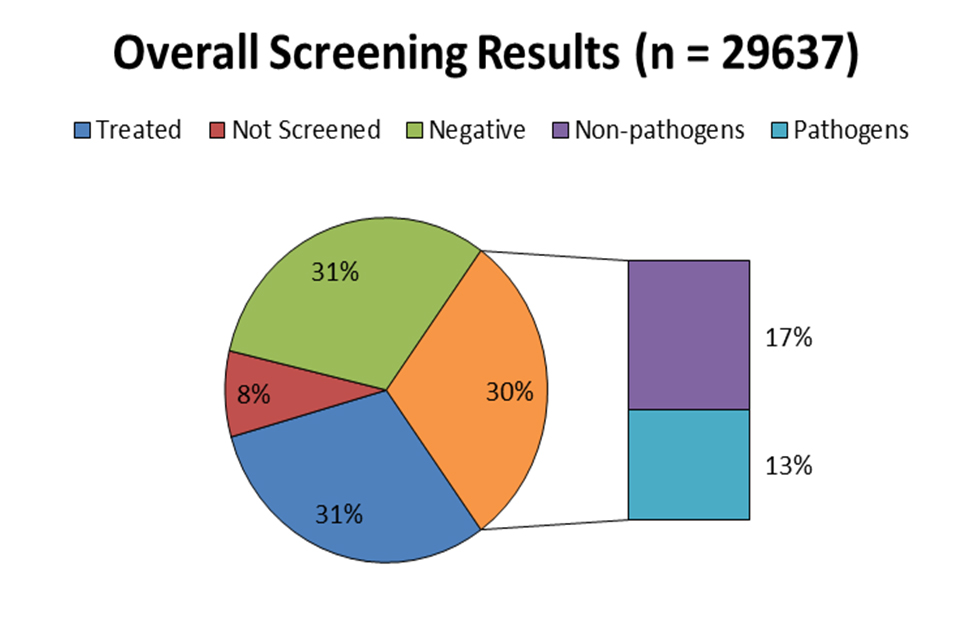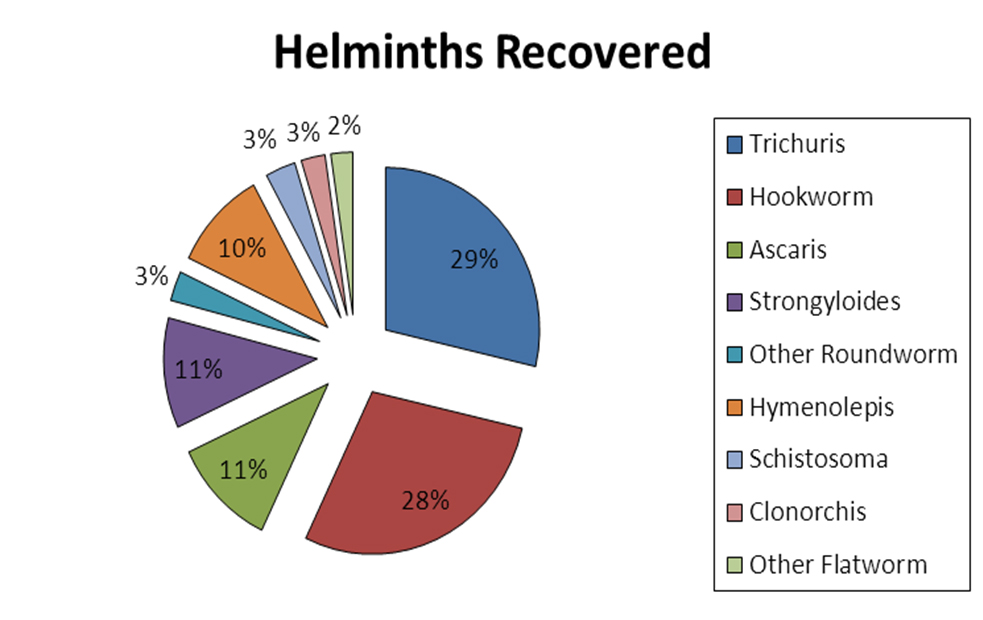Medical Parasitology - Refugee Health
Parasitology Home | Medically Important Parasites | Refugee Health | FAQ | Resources
Screening for Intestinal Parasites in Texas Refugees 2009-2013
The Texas Department of State Health Services (DSHS) Refugee Health Screening Program operates primarily with funds from the Office of Refugee Resettlement in the U.S. Department of Health and Human Services Administration for Children and Families. It also receives core support from the DSHS Tuberculosis Elimination Division. The Program supports local health departments in principal resettlement areas with resources to provide health assessments to newly arrived official refugees. It encourages screening for tuberculosis, immunization status, intestinal parasites, hepatitis B, and identification, education, and referral for other health problems. The Refugee Health Screening Program also collects and evaluates data on the results of these health screening efforts.
In 2011, the U.S. settled 56,424 refugees; approximately 11 percent of these in Texas. The state of Texas received approximately 7,000 arrivals, double that of the next highest state. Since the program began collecting information, refugees have come to Texas from at least 87 countries. The major resettlement areas for these arrivals are the Dallas, Fort Worth, and Houston regions. Smaller but regular numbers of refugees also settle in the Abilene, Amarillo, Austin, and San Antonio areas. Since 1994, the DSHS Laboratory Medical Parasitology Team has examined over 70,000 ova and parasite (O&P) specimens to support the Refugee Health Program.
Medical Parasitology O&P examinations include a formalin-ethyl acetate concentration and a trichrome stained smear. If indicated, a modified Ziehl-Neelsen stained smear for acid-fast organisms may also be used. Some patients are presumptively treated for parasites, or not screened for other reasons, but of the specimens examined in the DSHS Laboratory, over half have tested positive for the presence of parasites and many of those are multiple infections.
Charts and Graphs
All Refugee Arrivals

Ova & Parasite Results





